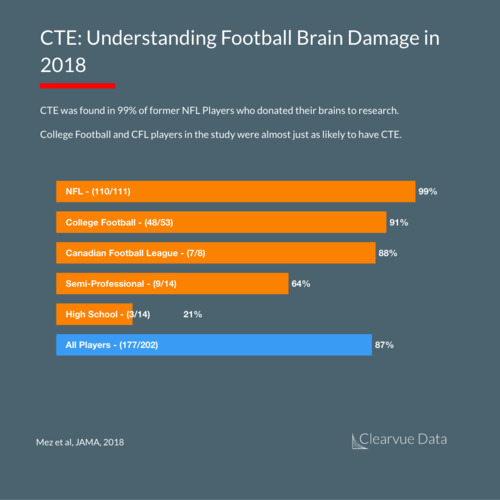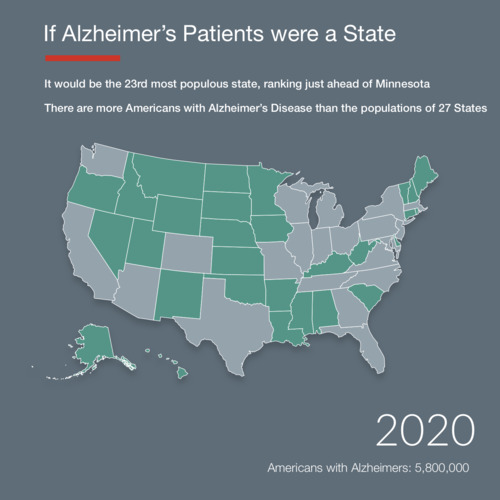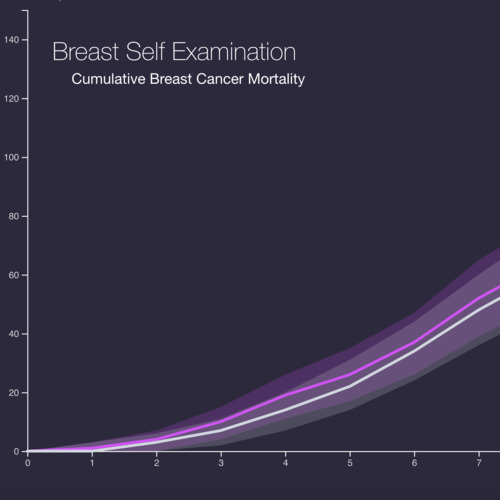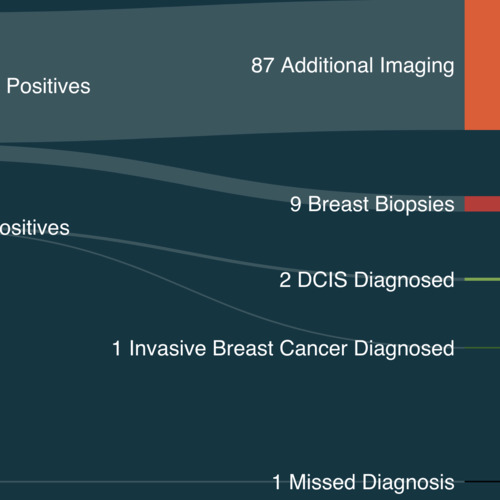NFL Players were found to have a 3x increase in risk of Dementia, Alzheimer's Disease, and ALS.
Additionally, long term brain injury in the form of CTE has been found in 99% of players who had donated their bodies for research.
However, until recently, it was unclear whether playing high school football was equally harmful.
The Data on High School Football and Dementia
Mayo Clinic recently studied 296 former varsity high school football players to help answer the question: Does high school football cause dementia?
Compared to their fellow students who did not play football, the study found that former football players had no significant increase in risk of Dementia or Parkinsons Disease, as summarized in the image below:

Horizontal Bars represent the margins of errors, with the white “dimple” showing the estimated relative risk.
The risk of Parkinsonism and Dementia in high school football players, in blue, do not cross the 1x line, and therefore are not significantly higher than non-football players.
This is despite the fact that they do have a significantly higher amount of head trauma, including concussions, (yellow) than non-football players.
This is significantly lower than the statistics for NFL players, in red, who have over 3x the risk of dying from Dementia, Parkinsons, and ALS.
Why this matters
We’ve been sounding the alarm for CTE and head trauma in the NFL, NHL, and other impact sports, for good reason.
With the high rates of CTE found in NFL Players, its clear that playing football can lead to some significant injury over time.
But, as the data shows, the risk in high school players is much smaller than in NFL players.
High school football has risks, but also significant health benefits. Generally, athletics, particularly in students, is very healthy and should be encouraged.
Of course, this doesn’t mean high school football is harmless. This was conducted on students who played football in the 1970s and the game has changed since then. The margins of error of all these studies are large, and we will know more as more studies come out.
How the study was conducted
Researchers at the Mayo Clinic identified former students who had played varsity football between 1956 and 1970 through yearbook records of high schools in Rochester, Minnesota and compared them against varsity student athletes in the same high schools who did not play football. This ensured that the athletes studied were as well matched with the controls as possible.
The researchers then examined the present day medical records to estimate how many in each group were diagnosed with Dementia, Parkinson’s Disease, and ALS.
The Data on CTE in Former High School Football Players

The data on CTE in former high school football players is much more limited as we currently can only diagnose CTE after death.
However, of the 14 former high school players who were studied, who had donated their brains to CTE research, only 3 had evidence of CTE and all were classified as mild CTE.
This of course was a self selected group of former players who were interested in CTE research. But even among this group, it appears that high school football is significantly less damaging than College Football and Professional Football.



